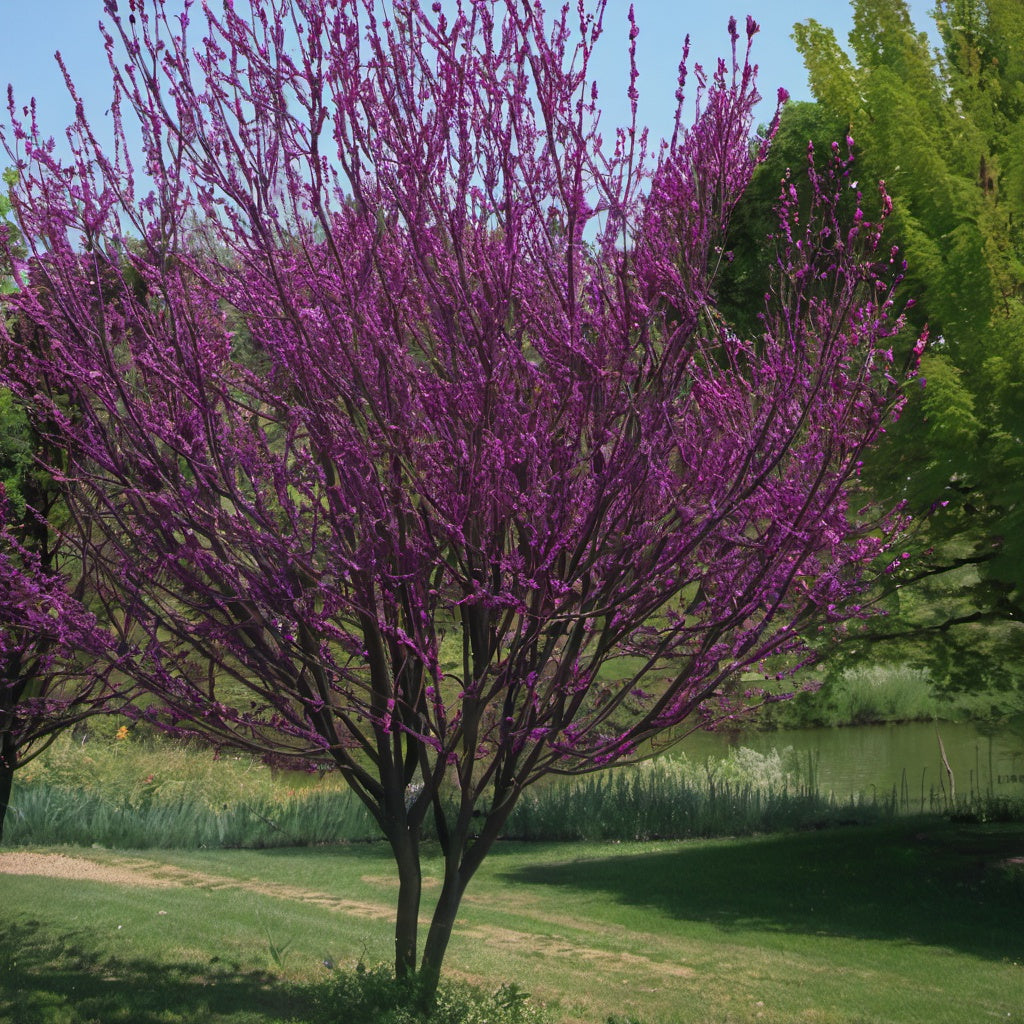Eastern Redbud Tree Seeds
Eastern Redbud Tree Seeds
Couldn't load pickup availability
Eastern Redbud Tree Seeds
(Cercis canadensis)
Cercis canadensis, commonly known as the Eastern Redbud, is a small deciduous tree native to eastern North America. It’s well-known for its brilliant springtime display of pink to reddish-purple flowers, which bloom profusely along its bare branches before the leaves emerge.
Key Characteristics:
- Size: Typically grows 20 to 30 feet tall with a similar spread, although it can sometimes reach heights of 40 feet.
- Flowers: The showy, pea-like flowers appear in clusters, usually in early to mid-spring. They range from pink to reddish-purple and are an early source of nectar for pollinators.
- Leaves: The heart-shaped leaves are bright green in spring and summer, turning yellow in the fall. The leaves are arranged alternately and measure 3 to 5 inches in width.
- Fruit: After flowering, the tree produces flat, bean-like seed pods that persist into winter.
- Bark: The bark starts smooth and brown but becomes scaly and ridged with age, often developing an attractive, rich reddish-brown tone.
Growing Conditions:
- Sunlight: Prefers full sun to partial shade.
- Soil: Adaptable to a range of soil types but thrives in moist, well-drained soils.
- Hardiness Zones: Typically grows best in USDA hardiness zones 4 through 9.
- Drought Tolerance: Once established, it can tolerate some drought, although it prefers regular watering.
Ecological Importance:
The Eastern Redbud is valued for its early blossoms, which attract bees, butterflies, and other pollinators. Its seeds provide food for birds and small mammals.
Landscape Use:
Due to its modest size, the Eastern Redbud is popular in home gardens and urban landscapes. Its stunning floral display, combined with its heart-shaped leaves, makes it a popular ornamental tree.
Zones: 6 to 9
Germination Range: 70-90%
Stratification Requirement: Seed requires scarification then 30 days cold moist stratification.
Planting Instructions:
Scarification is necessary, as the hard seed coat can inhibit water absorption. You can achieve this by gently rubbing the seeds with sandpaper or nicking them with a sharp knife.
After scarification, the seeds must undergo cold moist stratification, which mimics the natural winter conditions required for germination. Place the scarified seeds in a ziplock bag with moist seed starting mix, then seal them in the ziplock bag and refrigerate for 30 days. During this time, check periodically to ensure the medium remains moist but not soggy.
When the stratification period is complete, sow the seeds in a well-draining potting mix, about 1/4 inch deep, either in pots or directly in the ground if conditions are suitable. Choose a planting site with full sun to partial shade and well-drained soil, as Eastern Redbuds thrive in these conditions. Water the seeds gently but thoroughly after planting, keeping the soil moist but not waterlogged.
Germination may take several weeks. Once seedlings appear, continue watering regularly, but avoid overwatering. Seedlings can be transplanted to their permanent location when they are a few inches tall and have developed a strong root system. It's important to mulch around the young plants to retain moisture and control weeds. The Eastern Redbud typically takes several years to mature, but with proper care, it will grow into a beautiful, flowering tree that provides both shade and ornamental value.
Share


